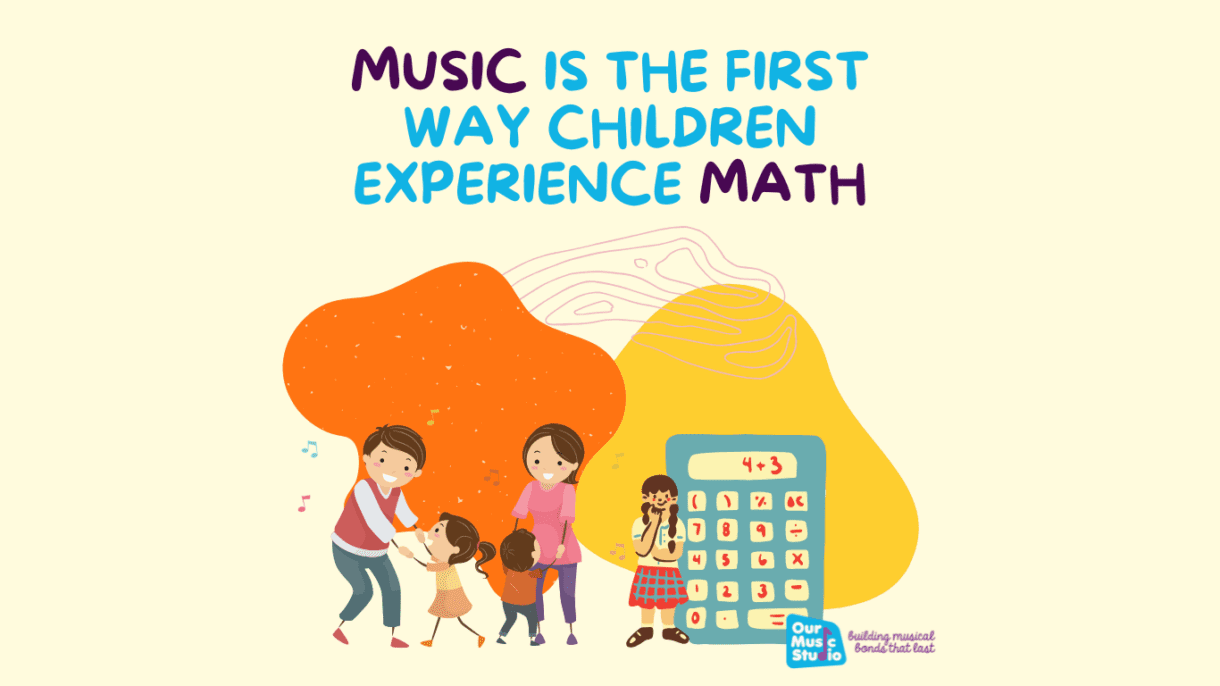
When we think of math, images of numbers, equations, and problem-solving often come to mind. But did you know that children’s first encounter with math is often through music? From rhythm to patterns, music provides a natural and enjoyable way for children to develop mathematical thinking. At Our Music Studio, we believe in nurturing both creativity and cognitive skills through the power of music.
Let’s explore how music serves as a child’s first introduction to the fascinating world of math!
1. Rhythm: The Foundation of Counting
Clapping hands, tapping feet, or playing drums involves understanding rhythm. Rhythm is essentially a sequence of beats in time, which helps children grasp concepts like:
- Counting beats (1, 2, 3, 4)
- Understanding intervals
- Recognizing patterns of repetition and symmetry
As children learn to keep time with music, they are unknowingly laying the groundwork for essential math skills such as sequencing and addition.
Patterns: Music and Mathematical Structures
Patterns are everywhere in music. Whether it’s the recurring melody in a nursery rhyme or the alternating beats of a drum, children learn to:
- Predict what comes next
- Identify similarities and differences
- Develop a sense of order and symmetry
These pattern recognition skills translate directly to problem-solving in math, where spotting patterns is key to understanding concepts like multiplication, geometry, and algebra.
Fractions and Ratios: Breaking Down Music
Music introduces fractions and ratios in a fun and accessible way. For instance:
- A whole note, half note, and quarter note represent divisions of time.
- Playing an octave involves understanding the 2:1 ratio in sound frequencies.
These concepts help children grasp mathematical principles that might otherwise feel abstract.
Spatial Awareness and Geometry
Learning to play an instrument often involves spatial reasoning. For example:
- A pianist learns the spacing of keys and the patterns of scales.
- A guitarist uses their fingers to form chords and understand fret distances.
This spatial awareness strengthens a child’s ability to visualize shapes and angles, a skill essential for geometry.
Problem-Solving Through Improvisation
Music is not just about following rules—it’s also about breaking them creatively! Improvising in music encourages children to think critically, experiment, and solve problems. These same skills are crucial in math, where creative approaches often lead to innovative solutions.
How Our Music Studio Integrates Math and Music
At Our Music Studio, we design our music programs to foster holistic development in children. By combining music education with fun activities, we help young learners:
- Build confidence in counting and patterns
- Develop an intuitive sense of timing and rhythm
- Cultivate problem-solving skills through musical exploration
Our classes are tailored to different age groups and skill levels, ensuring that every child finds joy in learning music—and math!
Why This Matters for Your Child
Music offers a stress-free, engaging way to introduce children to math. The skills they develop in music classes go beyond the classroom, helping them excel academically and socially. By investing in music education, you’re not just nurturing a future musician; you’re empowering your child with skills that will serve them for a lifetime.
Enroll Your Child Today!
At Our Music Studio, we’re passionate about helping children discover the joy of music and the hidden math within it. Contact us to learn more about our programs and how they can benefit your child’s development.


0 Comments